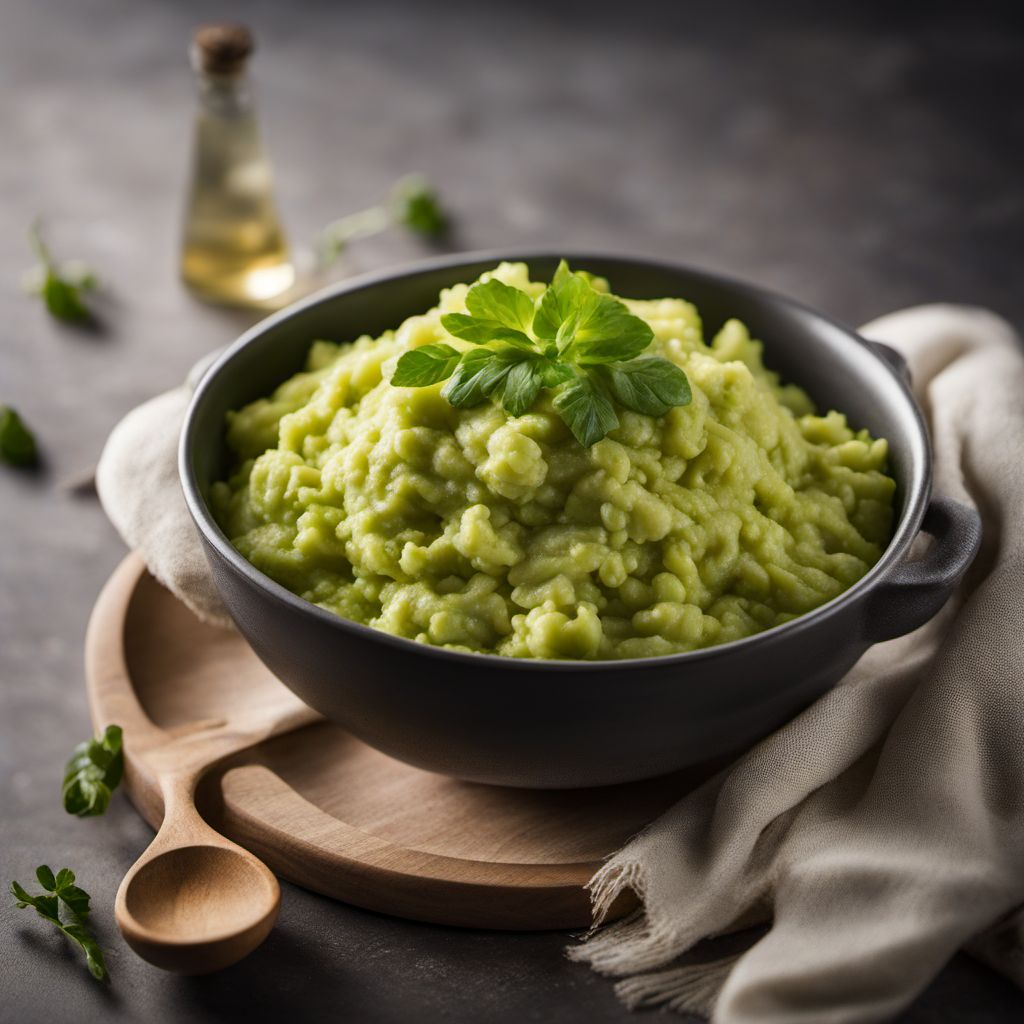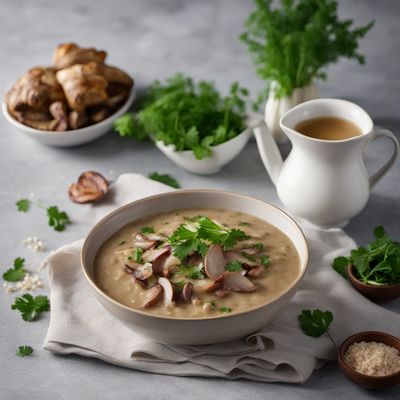
Ingredient
Mashed vegetable puree
Wholesome Veggie Mash: A Nutrient-Packed Delight
Mashed vegetable puree is a smooth and creamy blend of cooked vegetables, typically made by boiling or steaming them until tender and then mashing or pureeing them to a velvety consistency. This ingredient can be made using a single vegetable or a combination of different vegetables, such as potatoes, carrots, peas, or cauliflower. The puree is often seasoned with herbs, spices, or other flavorings to enhance its taste. It has a silky texture and can be used as a base for soups, sauces, side dishes, or even as a spread on sandwiches or toast. Mashed vegetable puree is an excellent way to incorporate more vegetables into your diet, as it retains the natural flavors and nutrients of the vegetables while providing a smooth and easily digestible form.
Origins and history
The concept of mashed vegetable puree can be traced back to ancient civilizations, where it was a common practice to cook and mash vegetables for various culinary purposes. In Europe, mashed potatoes became popular in the 18th century, and the technique of mashing vegetables spread across different cultures and cuisines. Today, mashed vegetable puree is enjoyed worldwide and has become a staple in many traditional and modern recipes.
Nutritional information
Mashed vegetable puree is a nutritional powerhouse, packed with essential vitamins, minerals, and dietary fiber. It is low in calories and fat, making it a healthy choice for those watching their weight. This ingredient provides a good source of vitamins A, C, and K, as well as potassium and folate.
Allergens
Mashed vegetable puree is generally allergen-free, but individuals with specific vegetable allergies should exercise caution and avoid the particular vegetable used in the puree.
How to select
When selecting vegetables for mashed vegetable puree, choose ones that are fresh, firm, and free from blemishes or signs of decay. Look for vibrant colors and avoid vegetables that are wilted or have soft spots. Opt for organic or locally sourced vegetables whenever possible to ensure the best quality and flavor.
Storage recommendations
Store mashed vegetable puree in an airtight container in the refrigerator for up to 3-4 days. To extend its shelf life, you can also freeze the puree in individual portions for up to 3 months. Thaw frozen puree in the refrigerator overnight before reheating or using.
How to produce
To produce mashed vegetable puree at home, start by washing and peeling the vegetables, if necessary. Cut them into evenly sized pieces and cook them until tender. Drain any excess liquid and transfer the cooked vegetables to a bowl or food processor. Mash or puree the vegetables until smooth, adding a little liquid (such as vegetable broth or milk) if needed to achieve the desired consistency. Season with salt, pepper, herbs, or spices according to taste.
Preparation tips
Mashed vegetable puree can be used in a variety of ways. It can be served as a side dish alongside roasted meats or fish, used as a base for soups or stews, or incorporated into casseroles or pasta dishes. For a creamier texture, add a dollop of butter, cream, or Greek yogurt to the puree. Experiment with different vegetable combinations and seasonings to create unique flavors.
Culinary uses
Mashed vegetable puree is a versatile ingredient that can be used in numerous culinary applications. It can be used as a base for vegetable soups, as a filling for stuffed vegetables, or as a topping for shepherd's pie. It can also be used as a spread on sandwiches or as a healthy alternative to traditional mashed potatoes.
Availability
Mashed vegetable puree is commonly available in grocery stores and supermarkets, and the availability of different vegetable options may vary depending on the region.
More ingredients from this category
Recipes using Mashed vegetable puree » Browse all

Nasi Goreng
Indo-licious Nasi Goreng: A Flavorful Twist on a Classic Indonesian Dish

Assamese Style Noodle Soup
Assamese Delight: A Flavorful Twist to Noodle Soup

Estonian Mushroom Porridge
Forest Delight: Estonian Mushroom Porridge

Korean-style English Breakfast
Bibimbap-inspired English Breakfast Bowl

Mordovian Black Rice Stew
Savory Delight: Mordovian Black Rice Stew

Malaysian Coconut Curry Noodle Soup
Creamy Delight: Malaysian Coconut Curry Noodle Soup

Rajasthani-style Vol-au-vent
Saffron-infused Delight: Rajasthani-style Vol-au-vent

Tongan-style Bamischijf
Tropical Twist: Tongan-style Bamischijf with Island Flavors

Lunice with a Twist
Savory Delight: A Modern Twist on Croatian Lunice

Machanka with Pork and Mushrooms
Savory Belarusian Delight: Machanka with Pork and Mushrooms

Gujarati-style Gyaho Curry
Spiced Chickpea and Vegetable Curry with a Gujarati Twist

Chifa-inspired Stuffed Pancakes
Chifa Fusion: Savory Stuffed Pancakes with a Twist